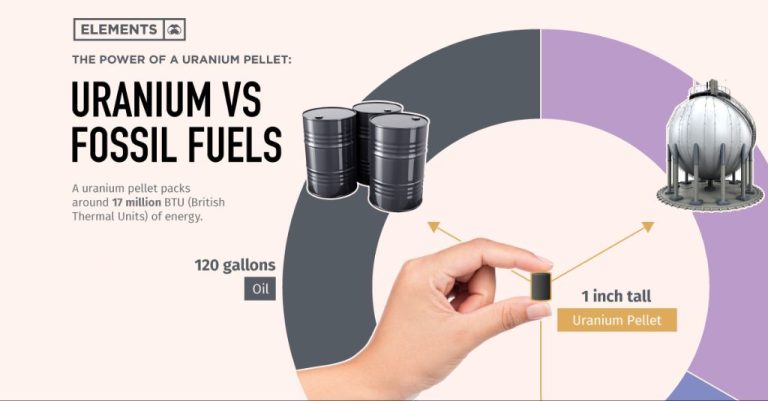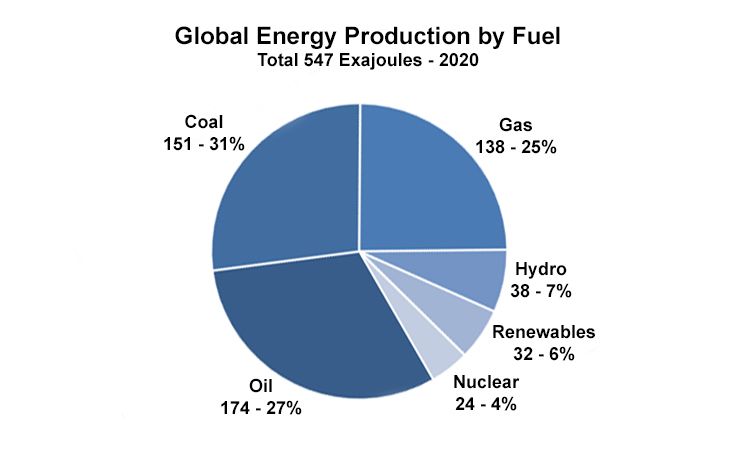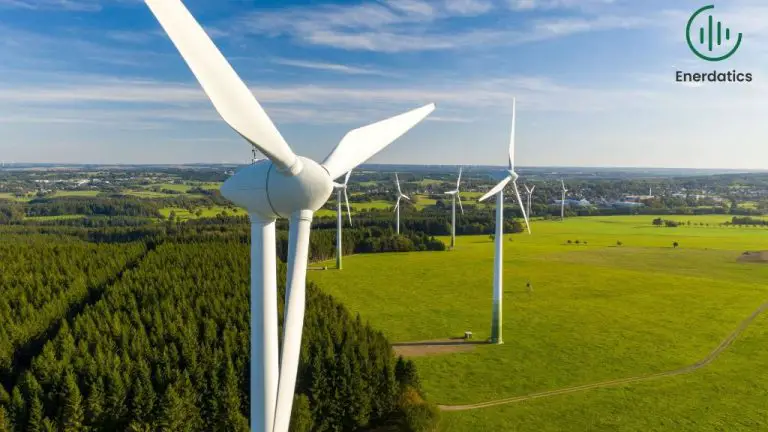What Is Power Generating?
Power generation is the process of generating electric power from sources of primary energy, such as coal, natural gas, nuclear, solar, wind, and hydroelectric. Electricity is an essential part of modern life that powers our homes, businesses, industries, and transportation systems. Reliable and affordable electricity provides tremendous social and economic benefits, including lighting, heating, cooling, and powering various devices and equipment. Power generation plays a vital role in supporting economic growth, improving standards of living, and enabling technological innovations that impact nearly every aspect of daily life. Understanding how we produce electricity is important as we transition to more sustainable energy systems that support a cleaner environment and more stable climate.
History of Power Generation
Humans have harnessed energy to perform work for thousands of years. The earliest form of power generation dates back to when early humans first learned to control fire. This allowed them to provide light, heat homes, and cook food. For centuries, human and animal muscle power were the primary energy sources.
The Industrial Revolution in the 18th and 19th centuries marked a major turning point. With the advent of the steam engine, large amounts of mechanical power could be generated for factories and mills. Coal was the main fuel source used to boil water to produce steam. The steam engine enabled the transition from agriculture and reliance on manual labor to industrial manufacturing and machinery.
In the late 19th century, engineers developed generators that could convert the mechanical energy from steam engines into electricity. With the distribution of electricity enabled by power lines, homes and businesses could utilize this new form of energy for lighting, appliances, machinery and more. Fossil fuels like coal and, later, oil and natural gas continued as the main sources of power generation into the 20th century.
The early 20th century saw the emergence of hydropower and nuclear fission as new sources of electricity generation. Hydropower harnesses the energy from flowing water to turn turbines attached to generators. Nuclear power relies on the enormous amounts of energy released during nuclear fission reactions in reactors. More recent developments, like solar panels, wind turbines and geothermal plants, allow for generating electricity from renewable sources.
Today’s electrical grid is made up of a diverse mix of power plants that generate electricity from coal, natural gas, nuclear, hydropower and renewables. As technology continues to advance, the methods and sources for power generation will likely evolve as well. However, providing reliable, affordable and sustainable electricity remains the goal.
Types of Power Plants
There are several major types of power plants used for generating electricity around the world:
Coal Power Plants
Coal power plants burn coal to heat water and produce steam that spins a turbine to generate electricity. Coal is a relatively cheap and abundant fossil fuel that produces reliable power. However, burning coal also produces air pollutants and greenhouse gases. Coal power comes with significant environmental impacts.
Natural Gas Power Plants
Natural gas power plants use natural gas to fire generators and turbines to produce electricity. They release fewer emissions than coal plants and can ramp up quickly to meet peaks in demand. Natural gas is a cleaner fossil fuel but still results in some air pollution.
Nuclear Power Plants
Nuclear power plants use the heat from nuclear fission reactions to produce steam and generate power. Nuclear provides consistent, low-carbon baseload power, but faces concerns over radioactive waste disposal and safety.
Hydroelectric Plants
Hydropower plants use flowing water from dams or tidal forces to spin turbines connected to generators. Hydroelectric power provides renewable, emissions-free electricity, but impacts local aquatic ecosystems.
Solar Power Plants
Solar power plants use large arrays of photovoltaic panels to convert sunlight into electricity. Solar PV provides clean renewable power but depends on sunlight and requires battery storage when the sun isn’t shining.
Wind Power Plants
Wind power plants use large wind turbines to harness the wind’s kinetic energy and generate emission-free renewable electricity. Wind power output varies based on wind conditions but helps diversify the energy mix.
How Electricity is Generated
The process of generating electricity at power plants starts when energy is generated from a primary source, like coal, natural gas, running water, or steam created by nuclear fission. This process of generating energy is called primary power generation.
The primary energy source is used to turn turbines at an electric power plant. The turning turbines then spin magnets located inside wire coils, creating a rotating magnetic field that pushes electrons in the wire coils, generating electricity through electromagnetic induction.
The electricity generated from the wire coils is then regulated for electrical grid distribution. Voltage transformers increase the electricity to extremely high voltages that allow the electric power to be transmitted over long distances through transmission lines with minimal electrical power loss.
When the electricity reaches the general area where it will be consumed, the high voltage electricity is stepped down at a substation by distribution transformers into lower voltages that can be used in homes and businesses. The electricity is then distributed through distribution lines until reaching its final destination.
Transmission and Distribution
Once electricity is generated at power plants, it needs to travel across long distances to reach homes, businesses and other end users. This is done through an extensive network called the power transmission and distribution grid.
The transmission system transports bulk electricity at high voltages, often across state lines. Transmission lines carry voltages of 115,000 volts or more and are held up by large steel towers and poles. Transformers at substations increase the voltage even further for efficient long-distance transmission.
Closer to end users, electricity flows through the distribution system. The distribution lines carry lower voltage power, ranging from 4,000 to 34,500 volts. Transformers at utility poles and substations reduce power from transmission voltage to the distribution voltage level. Distribution lines often run along roads and through neighborhoods on smaller poles and underground cables.
From the distribution system, transformers reduce voltage further before electricity enters homes and businesses. Voltages are lowered to 120/240 volts for safe residential and commercial use. The extensive transmission and distribution network delivers reliable electricity across vast distances, from power plant generators to end use customers.
Environmental Impacts
The way we generate electricity has significant impacts on the environment and climate change. Different energy sources and technologies have varying environmental costs and benefits.
Fossil fuels like coal, oil, and natural gas emit greenhouse gases like carbon dioxide (CO2) when burned to generate electricity. This contributes to global warming and climate change. Coal power in particular produces large volumes of CO2 emissions. Coal plants also emit mercury, sulfur dioxide, nitrous oxides, and particulate matter, leading to smog, acid rain, and health impacts.
Nuclear power produces very low CO2 emissions, but the mining, enrichment, and transport of uranium is energy intensive. In addition, the radioactive waste from nuclear plants must be safely stored for thousands of years. There are risks of nuclear meltdowns and accidents. Hydropower is renewable and emissions-free, but building large dams floods habitats and changes ecosystems.
Renewables like solar, wind, and geothermal have minimal emissions and environmental impacts once installed. However, manufacturing solar panels and wind turbines does require energy and resources. Solar and wind projects also require land clearing. Overall though, renewables are some of the cleanest energy sources available today.
No energy source is completely emissions-free or without any environmental footprint. However, replacing fossil fuels with clean renewables can greatly reduce power generation’s impacts on climate change and the environment.
Reliability and Resiliency
The electrical grid is designed to provide reliable power to customers. Power companies aim to deliver electricity with little to no interruptions. However, outages still occur due to events like storms, accidents, and equipment failures. When outages happen, the focus shifts to restoring power safely and quickly.
To maintain reliability, power grids have redundancy built in. This means critical components are duplicated so if one part fails, there is a backup. Power plants and substations are also strategically located to reroute electricity if needed. Sophisticated monitoring and control systems watch for problems and can isolate damage to prevent wider blackouts.
Resiliency refers to the grid’s ability to bounce back from disruptions. Hardening infrastructure and creating smart grids that self-heal have improved resiliency. Response plans prepare utilities to restore power after emergencies. Microgrids and distributed energy resources like solar panels and batteries make the grid more decentralized and less vulnerable to single points of failure.
Overall, investments in technology and infrastructure have made today’s grid more reliable and resilient than ever. However, increasing extreme weather and cybersecurity threats present new challenges. Maintaining reliability while transitioning to clean energy will require continued efforts to create a robust and flexible grid.
Future of Power Generation
The future of power generation lies in new and emerging technologies that can provide clean, reliable electricity in an affordable and sustainable manner. Some key innovations that may shape the landscape in coming decades include:
Renewable Energy
Renewable sources like solar, wind and hydropower will continue expanding their share of electricity generation. With costs declining and efficiency improving, renewables are quickly becoming cost-competitive with fossil fuels while offering environmental benefits. Continued technological improvements and energy storage solutions will enable greater penetration of renewables onto the grid.
Advanced Nuclear
Advanced, next-generation nuclear reactors aim to deliver safe, carbon-free baseload power. Promising new technologies include small modular reactors (SMRs), high-temperature gas reactors (HTGRs) and molten salt reactors (MSRs). Such advancements could enable nuclear to play a bigger role in a clean energy future.
Carbon Capture
Carbon capture and storage (CCS) will be critical for reducing emissions from fossil fuel plants. The technology can capture CO2 emissions before they enter the atmosphere and sequester them underground. CCS can enable fossil fuels to play a role in a low-carbon future.
Smart Grids
Sophisticated smart grids will help manage the complexity of new renewable sources, storage, EVs and distributed generation. By balancing supply and demand in real-time, smart grids can enhance reliability and efficiency.
Power generation is being transformed worldwide by clean technologies, smart systems and new business models. Though fossil fuels still dominate today, the energy systems of tomorrow will likely be far more diverse, distributed and digitally-enabled. Innovation in power generation will be key for building affordable, reliable and sustainable electricity infrastructure to meet the needs of the future.
Global Power Generation
Power generation varies widely around the world due to differences in resources, infrastructure, and demand. Fossil fuels like coal, oil, and natural gas make up about two-thirds of electricity generation globally. However, renewable sources like hydropower, wind, solar, geothermal, and bioenergy are growing rapidly in many countries.
China generates the most electricity of any country, relying heavily on coal. The United States comes in second for generation, with a more diverse electricity mix including natural gas, coal, nuclear, and renewables. Other top electricity producers are India, Russia, Japan and Germany. Developing nations often struggle to meet rising power demand and expand electricity access.
The worldwide shift toward clean energy aims to reduce air pollution and carbon emissions from fossil fuel combustion. But every country has a unique set of resources and priorities. Energy security and affordability remain top concerns for both industrialized and developing economies. As electricity demand continues rising globally, nations must invest in new generating capacity and transmission infrastructure to meet future needs.
Conclusion
Power generation is a complex and vital infrastructure that forms the backbone of the modern world. This overview has shown the journey of power generation from its early beginnings to the state-of-the-art systems used today. Key points of this content covered the major types of power plants in use globally, how electricity is generated and delivered to our homes and businesses, the environmental impacts of power generation, and the reliability challenges for grids to provide consistent power 24/7. While our reliance on electricity is unlikely to diminish, power generation must continue to innovate and transition to cleaner, more sustainable models for supplying the world’s energy needs. Ultimately, the importance of power generation cannot be overstated – it enables modern life in all its forms and will remain a critical service for societies worldwide.




